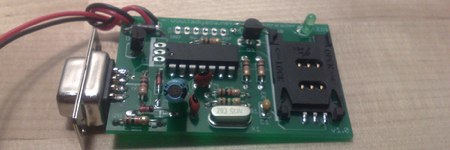
Adafruit Industries sent us one of their SIM Reader kits a few weeks ago to test. Assembly was a breeze thanks to the through hole components and good documentation. We plugged it into our USB -> RS232 converter and tried out the provided pySimReader software. It worked fine, but our modern SIM card out of an N95 didn’t prove very interesting. It was too new to attempt cloning and being a smart phone it doesn’t rely on the SIM for storing anything unless you specifically tell it to. The story was the same for a SIM we pulled out of a Treo. We tried the device with [Dejan]’s SimScan and a copy of Woron Scan. Both worked without any issue. Conclusion: the device works great despite us lacking anything interesting to do with it.
Misc Hacks4188 Articles
Defcon 16: List Of Tools Compiled

Zero Day posted a list of tools and applications that were released at Defcon 16. The applications run the gamut, from Beholder, an open source wireless IDS tool, to CollabREate, a reverse-engineering plugin that allows multiple people to share a single project. The list covers a lot of ground, and there’s a lot for hackers to play around with and explore. It’s nice to see someone bothering to maintain a list since the majority of conference tools just get lost in the shuffle and are never seen again.
Electric Mannequin Leg Maraca
[Richie Brown] created an electric mannequin leg maraca. The leg is filled with little bits of plastic, metal, and wood. Hook it up to a looping pedal, add a piezo disc mic, and you’ve got an unusual instrument with a lot of potential. [Brown] has other projects that encourage interaction and invite curiosity, from disembodied mannequin parts to repurposed piano keyboards. The creations come attached with contact mics that pick up noises as people touch, poke, and play around with them.
Io9’s Build A Lifeform Contest

There’s still time to enter io9’s Build a Lifeform contest. Synthetic biologists, get cracking on the design of that synthetic lifeform or BioBricks lifeform! The rules are pretty straightforward; you need to propose a lifeform design that would be scientifically viable. The BioBricks lifeform part of the contest requires that your design needs to not only be scientifically viable, you have to explain how you would create it in a lab, and you get extra points if you already have an organism. The deadline is August 25, 2008. You could win the opportunity to attend an all-expenses-paid trip to the Synthetic Biology Conference in Hong Kong or $1000 and a chance to get your creature drawn by a cool comic book artist.
1920s Navigation System And More

And now, for your amusement, we present to you a navigation system from the 1920s. It’s not so much a satellite navigation system as it is a tiny map mounted in a wristwatch, but for the available technology of the era, this was a pretty ingenious invention, Other (and somewhat more bizarre) entries on this list of over a dozen other inventions from the early part of the 20th century include a finger stretcher, an eyeball massager, and mustache guards. Although most of these inventions seem laughable today, they are an interesting study in finding creative solutions to real problems. After all, what these inventors did a hundred years ago with gears and paper is pretty much what we do today with transistors and LEDs.
[via The Presurfer]
USB Switched Power Strip

[toymotorhead] pieced together this USB controlled power strip to help with his electrical bill. His goal was to be able to have devices turned off automatically when he shut down his computer as well as powered on when he turned his computer on. Another requirement was that the USB be isolated to protect the motherboard from spikes.
The cost of the parts in total were less than $30, and consisted of a solid state relay, some fuses, and some transient voltage surge suppressing diodes. The unit only switches power off or on depending on whether or not the computer is powered up, it doesn’t control the outlets via software. He goes pretty in depth as to how everything works as well as showing nice diagrams and pictures. This should be a fairly quick and simple project, as long as you take the proper precautions for working with high voltage.
How To Hotwire Your Own Car

Picture this scenario: it’s 2 AM, you’re stuck somewhere you’d rather not be, and you’ve lost your car keys. If you can’t call the Auto Club, what do you do? Hotwire your own car, of course. Wired.com has a wiki article detailing all the things you need to do to get that car running: how to identify which wires to connect, potential pitfalls of newer cars that require an RFID chip in the key, and so on. Of course, hotwiring a car that doesn’t belong to you is illegal, but this is one of those skills-like lockpicking-which just might come in handy in an emergency.
[Photo: D.B. Blas]










